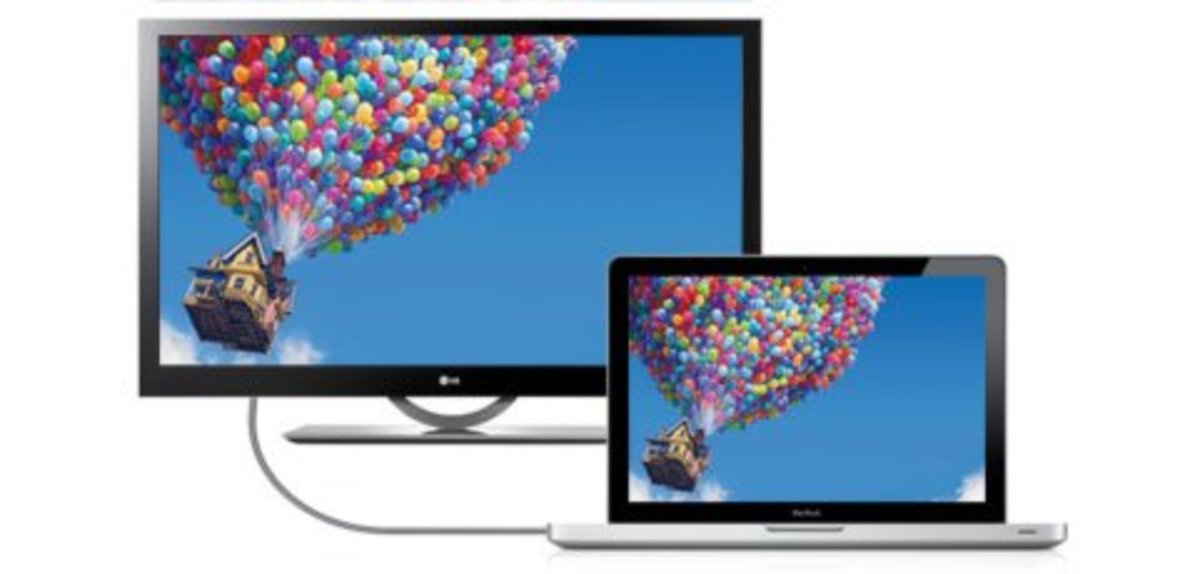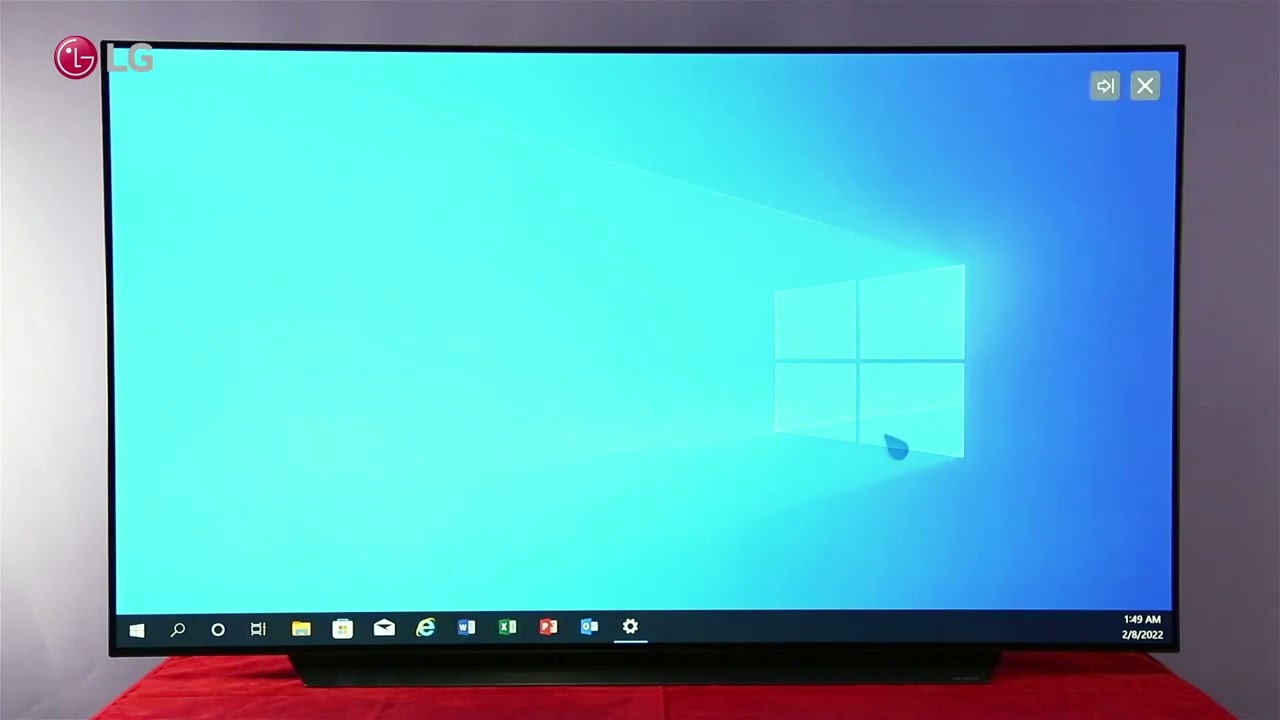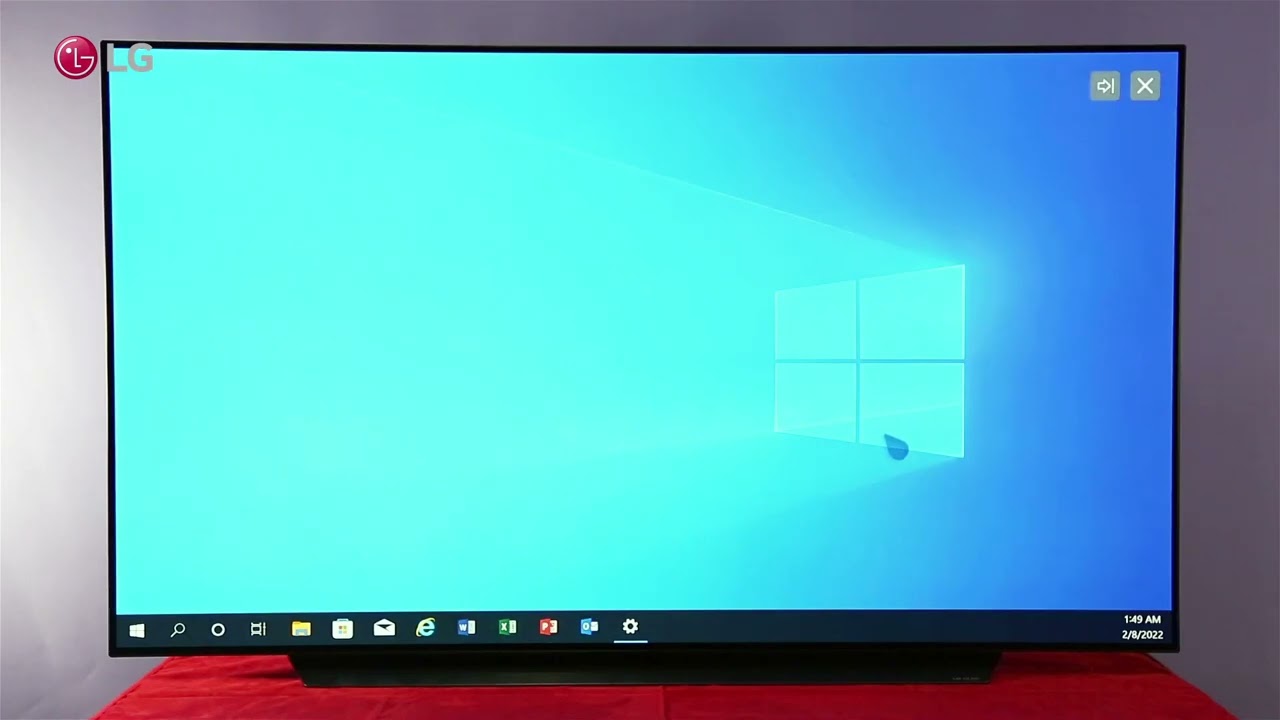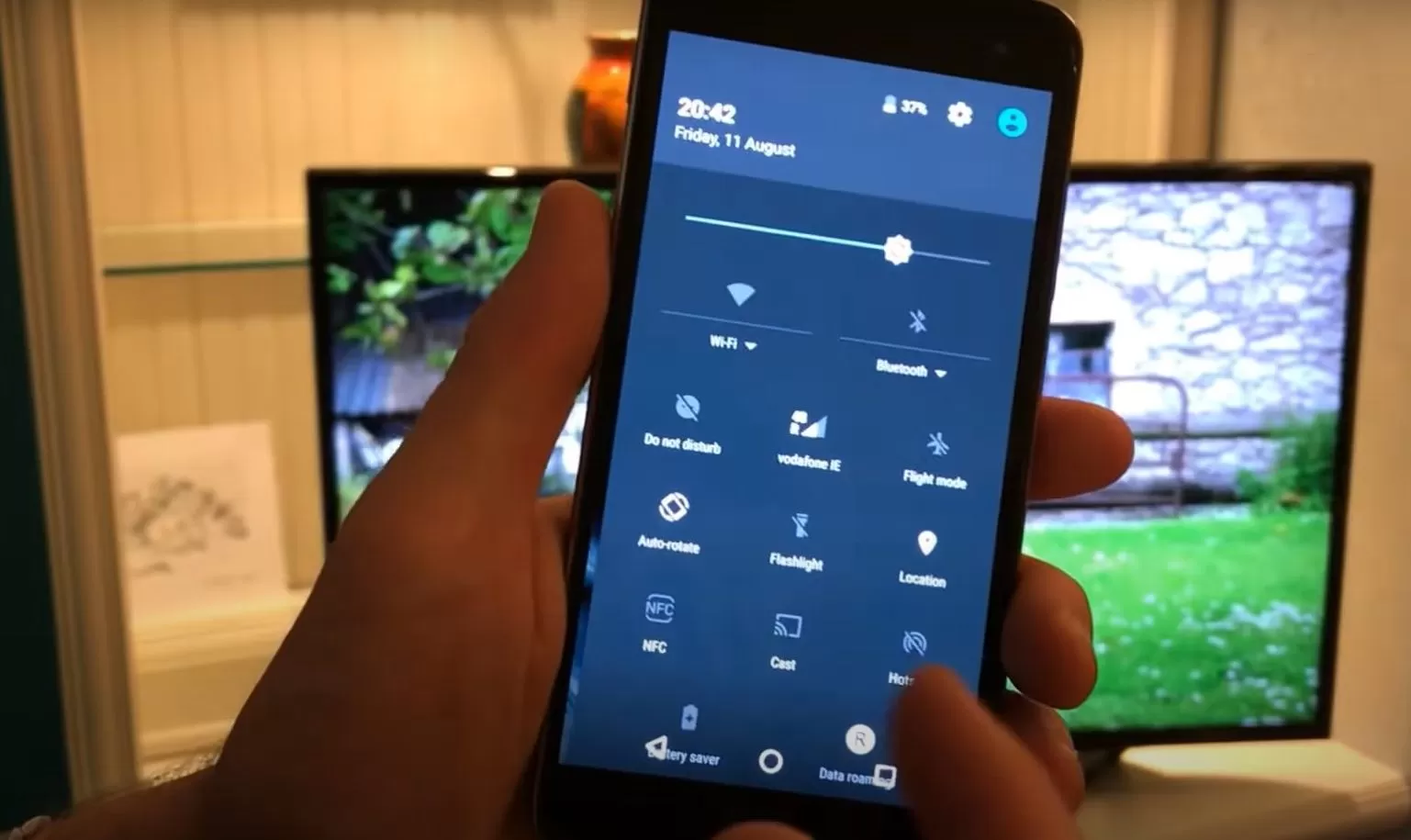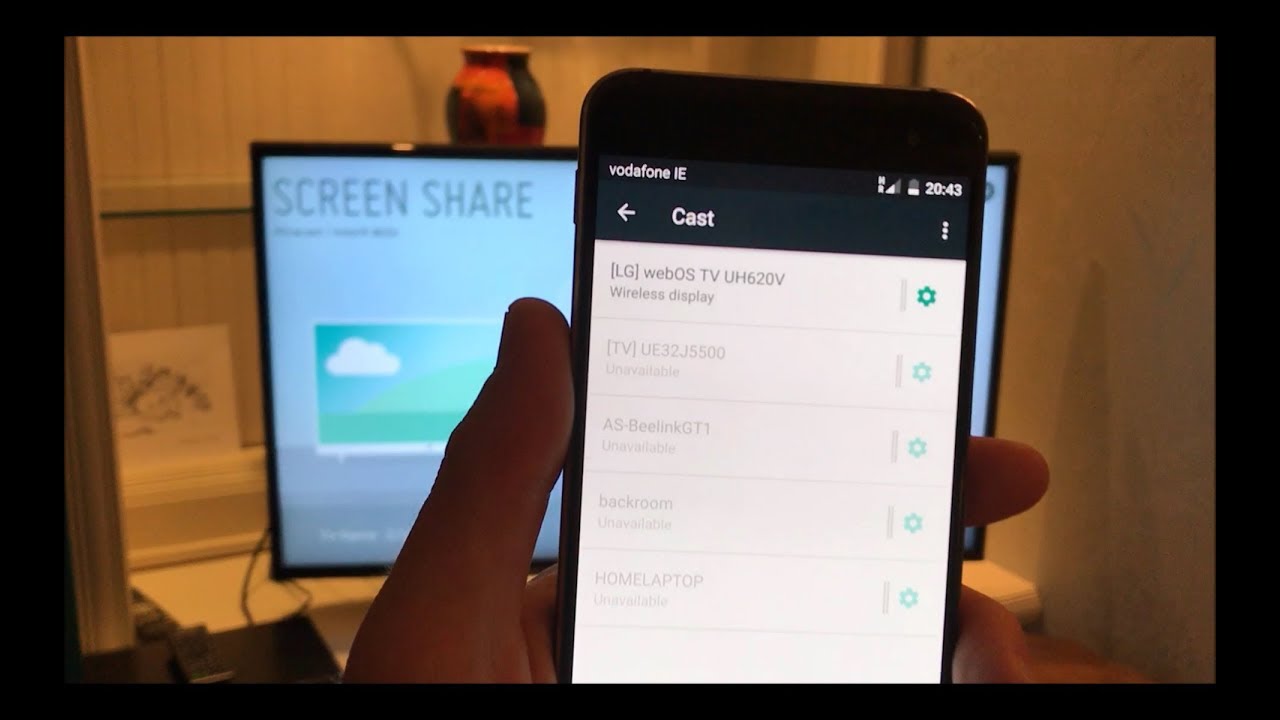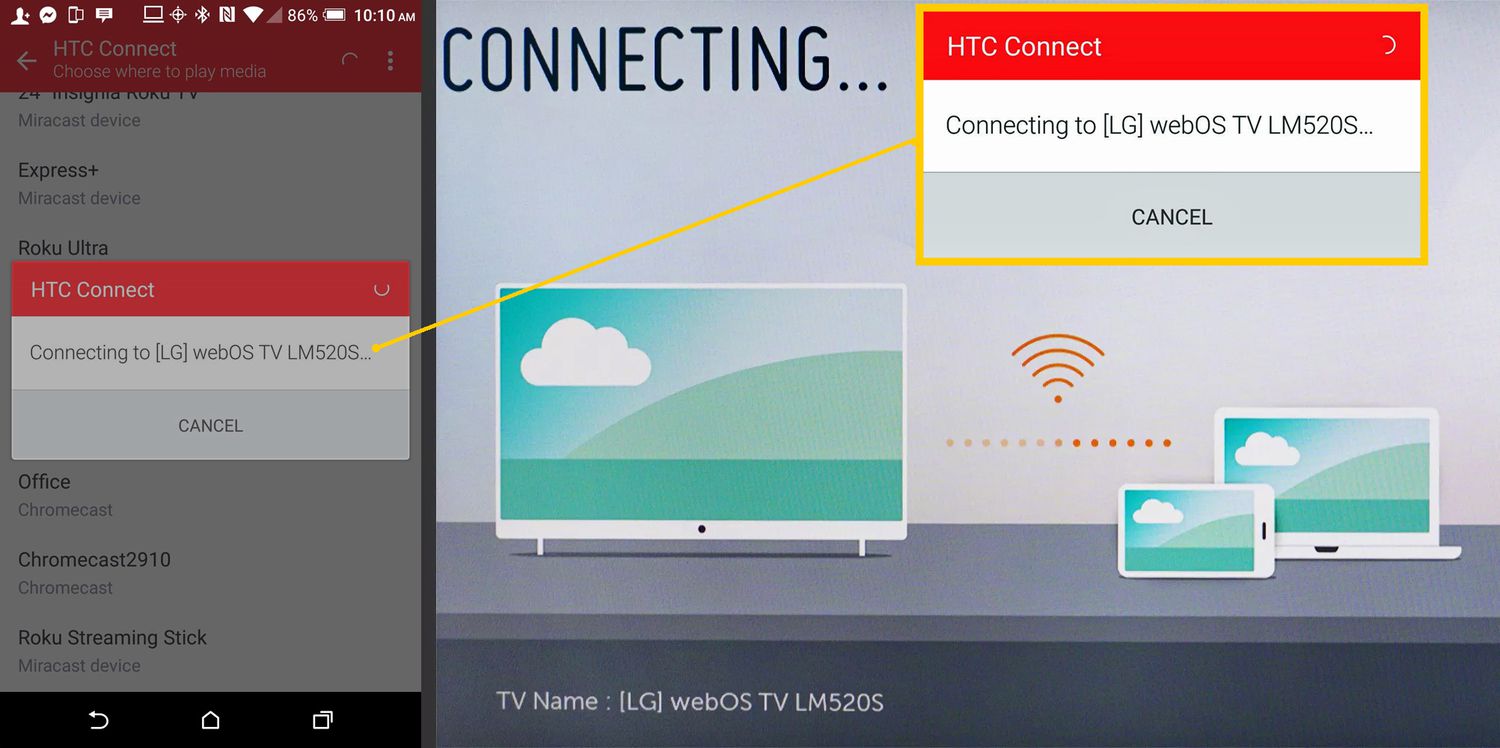Introduction
Welcome to our guide on how to share your Mac screen to an LG OLED TV! If you’re looking to stream movies, display presentations, or simply mirror your Mac’s screen onto a larger display, this article will walk you through the step-by-step process. Connecting your Mac to an LG OLED TV is a fantastic way to enjoy your favorite content on a bigger screen with exceptional picture quality.
Sharing your Mac’s screen to your LG OLED TV can be done wirelessly using Apple’s AirPlay technology. AirPlay allows you to seamlessly stream audio, video, and even mirror your entire screen from your Mac to your compatible TV. With a few simple steps, you’ll be able to enjoy your Mac’s content on the incredible display of your LG OLED TV, making your viewing experience even more immersive.
Before we begin, it’s important to make sure that your Mac and LG OLED TV are compatible with AirPlay. AirPlay is available on Mac computers running macOS Mountain Lion (10.8) or later, and on LG OLED TVs with built-in AirPlay 2 support. Checking for compatibility will save you time and frustration later on.
In the following sections, we’ll guide you through the process of connecting your Mac and LG OLED TV, enabling AirPlay on your Mac, connecting to your LG OLED TV using AirPlay, adjusting display preferences on both your Mac and TV, and troubleshooting common issues that may arise. So, grab your Mac, ensure your LG OLED TV is ready, and let’s get started!
Step 1: Check for Compatibility
Before connecting your Mac to your LG OLED TV, it’s important to ensure that both devices are compatible with AirPlay. AirPlay is a feature developed by Apple that allows wireless streaming and screen mirroring between devices. Here’s how to check for compatibility:
- Check your Mac’s operating system: AirPlay is available on Mac computers running macOS Mountain Lion (10.8) or later. To check your Mac’s operating system, click the Apple menu in the upper left corner of your screen and select “About This Mac.” You will see the version number of your macOS.
- Ensure your LG OLED TV supports AirPlay 2: AirPlay 2 support was introduced in some LG OLED TVs. Check your TV’s user manual or visit LG’s official website to confirm if your model supports AirPlay 2.
- Make sure your devices are on the same Wi-Fi network: For AirPlay to work, both your Mac and LG OLED TV need to be connected to the same Wi-Fi network. Ensure that both devices are connected to the network and have a stable internet connection.
If your Mac and LG OLED TV meet these compatibility requirements, you are ready to proceed with the connection process. However, if your Mac or TV does not meet the compatibility criteria, you may need to explore alternative methods to share your Mac’s screen with your LG OLED TV, such as using an HDMI cable or third-party applications.
Step 2: Connect your Mac and LG OLED TV
Once you’ve confirmed that your Mac and LG OLED TV are compatible with AirPlay, it’s time to establish a connection between the two devices. Follow these steps:
- Ensure that both your Mac and LG OLED TV are powered on and connected to the same Wi-Fi network.
- On your Mac, click on the Apple menu in the upper left corner of the screen and select “System Preferences.”
- In the System Preferences window, click on “Displays.”
- Click on the “Arrangement” tab and check the box next to “Mirror Displays” if you want the content on your Mac to appear exactly as it does on your LG OLED TV. If you wish to extend your Mac’s screen onto the TV, leave the box unchecked.
With these steps, you have successfully connected your Mac and LG OLED TV. The next step is to enable AirPlay on your Mac to start streaming or mirroring your Mac’s content.
Note: If you encounter any difficulties connecting your Mac and LG OLED TV, ensure that both devices are running the latest software updates. Updates often include bug fixes and improvements that can resolve connection issues.
Step 3: Enable AirPlay on your Mac
With your Mac and LG OLED TV successfully connected, it’s time to enable AirPlay on your Mac. Follow these simple steps:
- On your Mac, click on the Apple menu in the upper left corner of the screen and select “System Preferences.”
- In the System Preferences window, click on “Displays.”
- Click on the “AirPlay Display” dropdown menu and select your LG OLED TV from the list of available devices.
- Check the box next to “Show mirroring options in the menu bar when available.” This will allow you to easily access AirPlay settings from the menu bar on your Mac.
- Close the System Preferences window.
By following these steps, you have now enabled AirPlay on your Mac and made your LG OLED TV available as a display option. With AirPlay enabled, you’ll be able to stream videos, share photos, or even extend your desktop screen onto the TV with a few simple clicks.
If your LG OLED TV is not visible in the AirPlay Display dropdown menu, ensure that your Mac and TV are connected to the same Wi-Fi network. A stable Wi-Fi connection is essential for AirPlay functionality. Additionally, make sure that your LG OLED TV is powered on and has AirPlay 2 support for seamless compatibility.
With AirPlay enabled on your Mac, you’re now ready to connect to your LG OLED TV and start enjoying your Mac’s content on the larger, high-quality screen.
Step 4: Connect to your LG OLED TV using AirPlay
Now that AirPlay is enabled on your Mac, you can easily connect to your LG OLED TV and start streaming or mirroring your Mac’s content. Here’s how to do it:
- Locate the AirPlay icon in the menu bar on your Mac. It looks like a rectangle with an upward arrow inside.
- Click on the AirPlay icon in the menu bar and select your LG OLED TV from the list of available devices. If you have multiple LG OLED TVs or other AirPlay-enabled devices nearby, ensure you choose the correct one.
- If prompted, enter the AirPlay code that appears on your LG OLED TV to establish the connection. This code is a security measure to prevent unauthorized access.
Once the connection is established, you can select whether to mirror your Mac’s screen or use the TV as an extended display. If you choose to mirror, everything on your Mac’s screen will be replicated on the LG OLED TV. If you opt for an extended display, you can move windows and applications between the two screens.
Now, you can enjoy watching your favorite movies, streaming videos, giving presentations, or simply working on a larger screen with the stunning picture quality of your LG OLED TV.
If you experience any issues connecting or maintaining the AirPlay connection, ensure that both your Mac and LG OLED TV are powered on and connected to the same Wi-Fi network. Additionally, check that your software is up to date on both devices, as updates often include fixes for connectivity issues.
With your Mac connected to your LG OLED TV via AirPlay, you have access to a world of entertainment, productivity, and immersive viewing experiences right at your fingertips. Enjoy!
Step 5: Adjust Display Preferences on Your Mac and TV
After successfully connecting your Mac to your LG OLED TV using AirPlay, you may want to customize the display settings for an optimal viewing experience. Here are some adjustments you can make:
- Display Resolution: On your Mac, go to “System Preferences” and then “Displays.” From here, you can adjust the resolution to match the capabilities of your LG OLED TV. Higher resolutions will offer sharper and more detailed visuals, but keep in mind that it may affect performance if your Mac’s hardware is not powerful enough.
- Aspect Ratio: If the content appears stretched or distorted on your LG OLED TV, you can adjust the aspect ratio. On your LG OLED TV’s remote or settings menu, look for options like “Aspect Ratio,” “Picture Size,” or “Screen Fit.” Select the option that displays the content in its original format without distortion.
- Picture Mode: LG OLED TVs offer various picture modes (e.g., Standard, Cinema, Sport, etc.) tailored for different types of content. You can explore these modes and select the one that suits your preferences. The picture modes can usually be accessed through the settings menu on your LG OLED TV’s remote or on-screen interface.
- Sound Output: If you prefer to listen to the audio via external speakers or a sound system instead of the TV’s built-in speakers, you can adjust the sound output settings on your Mac. Go to “System Preferences,” then “Sound,” and select the desired output device under the “Output” tab.
- Other Settings: Both your Mac and LG OLED TV have additional display settings, such as brightness, contrast, color saturation, and more. Feel free to explore these settings and adjust them according to your preferences for an enhanced viewing experience.
By adjusting these display preferences, you can optimize the visual and audio settings to your liking, ensuring that you make the most of your Mac and LG OLED TV combination.
Remember, the specific options and settings may vary depending on your Mac model and LG OLED TV. Refer to the user manuals or online support resources for detailed instructions tailored to your specific devices.
Step 6: Troubleshooting Common Issues
While connecting your Mac to your LG OLED TV using AirPlay is generally a smooth process, you may encounter a few common issues along the way. Here are some troubleshooting tips to help you resolve them:
- No LG OLED TV found: If your LG OLED TV is not appearing in the AirPlay device list on your Mac, ensure that both devices are connected to the same Wi-Fi network. Also, check that your LG OLED TV has AirPlay 2 support. Restarting both your Mac and LG OLED TV can sometimes resolve the issue.
- Connection drops or lags: If the connection between your Mac and LG OLED TV keeps dropping or experiencing lag, it could be due to network congestion or interference. Move your Mac and LG OLED TV closer to the Wi-Fi router, minimize the number of active devices on the network, or consider using a wired connection through an Ethernet cable for a more stable connection.
- Poor video quality: If the video quality on your LG OLED TV is not up to par, ensure that your Mac supports the resolution and refresh rate of the content you are streaming. Adjust the display settings on both your Mac and LG OLED TV to optimize the picture quality. If the problem persists, try using a different HDMI cable or check for any software updates for your Mac and TV.
- No audio or audio sync issues: If you’re experiencing audio-related issues, such as no sound or audio not matching the video, check the sound settings on both your Mac and LG OLED TV. Ensure that the correct audio output device is selected on your Mac, and adjust the audio settings on your TV if necessary. If using external speakers or a sound system, make sure they are properly connected and powered on.
- Outdated software: Keeping your Mac and LG OLED TV’s software up to date is crucial for compatibility and optimal performance. Check for any available software updates on both devices and install them if necessary. Software updates often include bug fixes and improvements that may resolve common AirPlay-related issues.
If you encounter persistent issues that are beyond the scope of basic troubleshooting, consult the user manuals or contact the customer support for your Mac and LG OLED TV for further assistance.
Remember, troubleshooting will vary depending on the specific models and configurations of your Mac and LG OLED TV. It’s always a good idea to refer to the support resources provided by the manufacturers for tailored solutions.
Conclusion
Sharing your Mac screen to an LG OLED TV using AirPlay is a convenient and effective way to enjoy your favorite content on a larger, high-quality display. By following the steps outlined in this guide, you can establish a seamless connection between your Mac and LG OLED TV, allowing you to stream videos, display presentations, and mirror your screen effortlessly.
Remember to ensure compatibility between your Mac and LG OLED TV, check for the necessary software updates, and connect both devices to the same Wi-Fi network before initiating the connection process. Enabling AirPlay on your Mac and selecting your LG OLED TV as the display source will allow you to effortlessly enjoy your Mac’s content on the big screen.
Additionally, don’t forget to adjust the display preferences on your Mac and TV for an optimal viewing experience. From resolution and aspect ratio to picture modes and sound output, customizing these settings will enhance your enjoyment of the content being streamed or mirrored on your LG OLED TV.
If you encounter any issues along the way, refer to the troubleshooting tips provided in this guide. From ensuring a stable Wi-Fi connection to updating software and adjusting audio settings, resolving common issues can help you achieve a smooth and uninterrupted streaming experience.
Now that you are equipped with the knowledge to share your Mac screen to an LG OLED TV using AirPlay, it’s time to sit back, relax, and enjoy all the benefits of a larger, immersive viewing experience. Whether you’re watching movies, giving presentations, or simply working on a bigger screen, the combination of your Mac and LG OLED TV will elevate your content consumption and productivity.
So, grab your popcorn, settle into your favorite couch, and start enjoying the wonders of AirPlay on your Mac and LG OLED TV!







